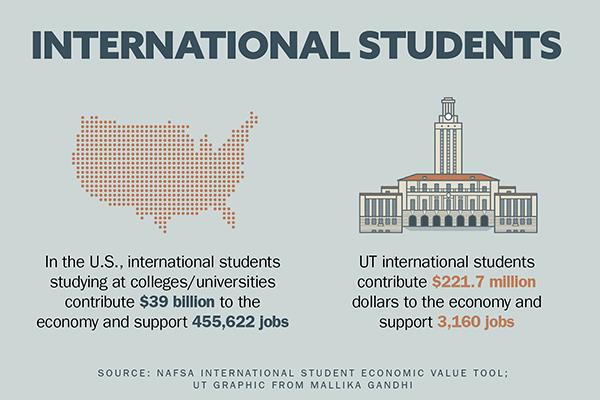The Economic Significance of International Students in the United States
International students have become indispensable contributors to American higher education and the broader economy. Beyond enriching academic environments, their financial impact is profound, injecting tens of billions of dollars annually into the U.S. economy and sustaining hundreds of thousands of jobs nationwide. This article delves into the multifaceted economic benefits these students bring, highlighting their role as key drivers of local and national prosperity.
How International Students Fuel Local Economies
Far from merely attending classes, international students act as catalysts for economic vitality in communities across the country. Their expenditures on tuition, accommodation, daily necessities, and leisure activities generate substantial revenue streams that invigorate local markets. Universities benefit directly through tuition fees and indirectly as increased funding supports research and employment opportunities. Meanwhile, sectors such as hospitality, retail, and real estate experience heightened demand, especially during academic semesters.
Local enterprises typically experience growth through:
- Elevated spending on dining, entertainment, and cultural events
- Increased demand for rental properties and housing options
- Creation of new jobs in retail, services, and property management
- Enhanced cultural diversity fostering entrepreneurial ventures and innovation
| Sector | Annual Economic Impact (in billions) | Employment Supported |
|---|---|---|
| Higher Education | $36 | 420,000 |
| Housing & Real Estate | $11 | 130,000 |
| Retail & Service Industries | $9 | 95,000 |
Industries Reaping the Benefits of International Student Expenditure
The financial contributions of international students extend well beyond tuition payments, permeating various sectors that rely on their consistent spending. Educational institutions see a direct boost in revenue, which supports faculty, infrastructure, and groundbreaking research projects that drive innovation. Simultaneously, local economies flourish as students spend on everyday essentials and lifestyle needs.
Key sectors experiencing notable growth include:
- Residential Housing: The surge in demand for off-campus living spaces benefits landlords, property managers, and construction firms.
- Food and Retail: From supermarkets to cafes and specialty stores, these businesses enjoy steady patronage from the student population.
- Transportation Services: Increased use of public transit, ride-sharing platforms, and vehicle rentals supports jobs and infrastructure development.
| Industry | Estimated Annual Spending (in billions) | Jobs Supported |
|---|---|---|
| Education | $27.3 | 365,000 |
| Housing | $8.5 | 115,000 |
| Retail & Food Services | $6.1 | 92,000 |
| Transportation | $3.4 | 55,000 |
Strategies to Maximize the Benefits of International Education
To fully harness the economic and cultural advantages international students offer, policy reforms and institutional support are essential. Simplifying visa procedures can reduce barriers to enrollment, encouraging more students to select U.S. universities. Additionally, expanding programs like Optional Practical Training (OPT) allows graduates to remain in the country longer, contributing their skills to the workforce and fostering innovation.
Universities can also enhance student success and integration by investing in tailored support services. These include career guidance, mental health resources, and intercultural exchange initiatives that promote a sense of belonging and community engagement.
| Policy Initiative | Anticipated Outcome |
|---|---|
| Visa Process Optimization | Higher enrollment rates and reduced application delays |
| OPT Program Expansion | Retention of international graduates in U.S. labor market |
| Enhanced Student Support Services | Improved academic performance and well-being |
| Promotion of Cross-Cultural Programs | Stronger community integration and global partnerships |
Overcoming Obstacles Faced by International Students
Despite their valuable contributions, international students often encounter significant hurdles. Complex visa regulations, cultural adjustments, and limited access to employment opportunities can impede their academic and social experiences. Language proficiency challenges and feelings of isolation further complicate their transition to life in the U.S.
Addressing these challenges requires comprehensive support frameworks that empower students to thrive. Effective measures include:
- Comprehensive Orientation Programs: Preparing students for academic expectations and cultural norms.
- Legal Assistance: Providing workshops and counseling to navigate visa and immigration processes.
- Cultural Integration Activities: Facilitating social events and mentorship to build community connections.
- Career Development Services: Tailoring job search support to international hiring practices and employer needs.
| Challenge | Support Approach |
|---|---|
| Visa Complexity | Legal Clinics & Advising |
| Language Proficiency | ESL Classes & Peer Support |
| Cultural Adaptation | Mentorship Programs & Social Events |
| Employment Barriers | Career Counseling & Networking Opportunities |
Looking Ahead: The Future Role of International Students in the U.S. Economy
In conclusion, international students are a cornerstone of the U.S. economic landscape, contributing billions annually through tuition, living expenses, and consumer spending. Their presence not only strengthens educational institutions but also invigorates local economies and job markets. As the nation navigates immigration and education policies, recognizing and supporting the substantial economic and cultural value of international students will be vital to maintaining AmericaŌĆÖs global competitiveness and fostering sustained economic growth.







